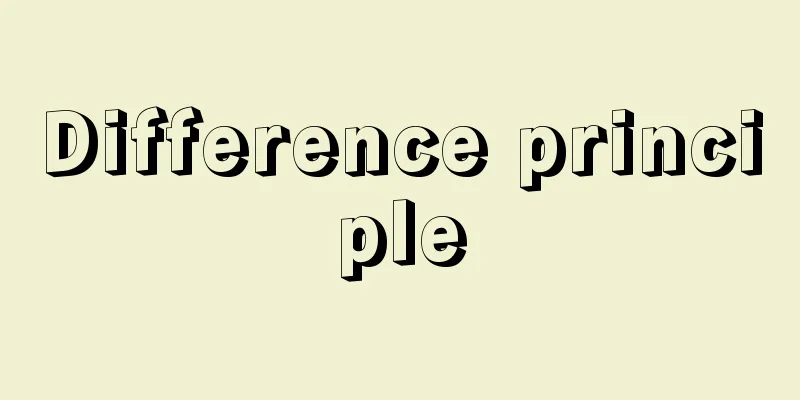Difference principle

|
Also known as the discrimination principle. One of the principles of justice, its purpose is to maximize the benefits of the least advantaged. J. Rawls formulated it in A Theory of Justice (1971) as being on par with the "right to equal liberty" and the "principle of equal opportunity." The order of priority of each principle is equal liberty, the principle of equal opportunity, and the difference principle. With the difference principle, Rawls aims for democratic equality that goes beyond the demands of mere natural liberty and fair equality of opportunity. Source: Encyclopaedia Britannica Concise Encyclopedia About Encyclopaedia Britannica Concise Encyclopedia Information |
|
差別原理ともいう。正義の原理の一つで,その内容は最も不利な立場におかれた人の利益の最大化である。 J.ロールズが『正義論』 (1971) において,「平等な自由への権利」と「機会均等原理」に並ぶものとして定式化した。各原理の優先順位は平等な自由,機会均等原理,格差原理の順となっている。ロールズは格差原理によって,単なる自然的自由や公正な機会均等の要求をこえた民主主義的平等を志向している。
出典 ブリタニカ国際大百科事典 小項目事典ブリタニカ国際大百科事典 小項目事典について 情報 |
Recommend
Morange, A. (English spelling) MorangeA
...A type of respiratory infection transmitted by...
Sunset - Yuuyake
This phenomenon occurs when the western sky turns...
Electrostatic precipitation
Dust collection using the action of electricity is...
Expectants - expectorants
Medicines that make it easier to expectorate phleg...
Bromine - Bromine
Br. Atomic number 35. Nonmetallic element in grou...
Kuramisou - Kuramisou
A manor in Mikata County, Wakasa Province. It was ...
Boninia glabra Planch.
An evergreen tree of the Rutaceae family endemic t...
Kitchen ring - Kitchen ring
…[Morioka Hiroyuki] Insects also have something c...
Tiger's mouth - Koguchi
The entrance to a castle or the enclosures that m...
Onoe Taganojo (first generation)
...Kabuki actor. The three generations are the mo...
Cylindrical end bar gauge - Entotanbargaji
...the end surface is either flat, cylindrical, o...
Government ordinance - Seirei (English spelling)
Cabinet orders are orders enacted by the Cabinet (...
Expected value - Kitaichi
When the outcome of a probability phenomenon is e...
"The Great Wall of Java" (English: The Great Wall of Java)
…He studied Basque and Indian grammar, translated...
Aeolus sound - Aeolus sound
The sound made when a strong wind blows against a...
![Satosho [town] - Satosho](/upload/images/67cbacfd8f7b6.webp)








